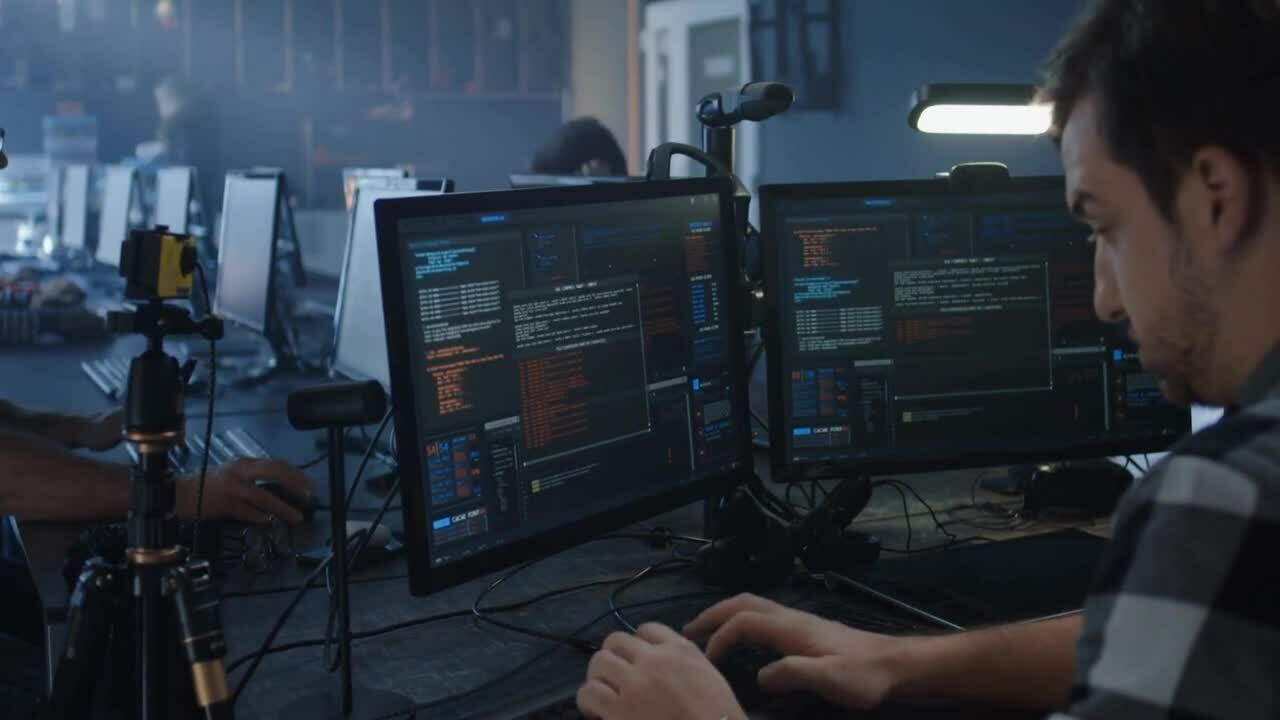How SolveXia Compliments Your Investment in RPA

Companies sometimes ask how SolveXia compares to Robotic Process Automation (RPA) tools like UiPath and Automation Anywhere. While we understand the comparison, we believe that SolveXia and RPA tools are different and complementary to each other.
To help compare RPA and SolveXia, we must first understand:
- The key drivers for automating with these tools; and
- The common use cases (for each tool); and
- How each tool works; and finally
- Who implements the automation in each tool.
We then provide a summary of how these technologies work together to deliver great outcomes for companies looking to drive efficiency and process improvement.
Coming Up
1. What are the Key Drivers for Using RPA vs. SolveXia?
2. What are the Most Common Use Cases for RPA vs. SolveXia?
3. How Does Each Tool Automate Processes?
4. Who Delivers the Automation for RPA vs. SolveXia?
5. RPA and SolveXia - Complimentary Solutions
What are the Key Drivers for Using RPA vs. SolveXia?
Regardless of the automation technology, companies automate processes for several reasons, including;
- Improving productivity; and
- Improving compliance, quality and accuracy; and
- Reducing costs.
Both RPA and SolveXia are effective ways to deliver the outcomes above. However, one area of differentiation is that SolveXia is also used to help companies derive more value from their data (e.g. better insights, more granular or frequent analytics, etc.).
Establishing that the reasons for automation with either tool (RPA or SolveXia) are similar, we then need to consider the types of processes that are automated with each technology.
What are the Most Common Use Cases for RPA vs. SolveXia?
To understand how RPA and SolveXia are different, let’s start by looking at each technology’s most popular use cases.
RPA Use Cases:
RPA is used to automate interactions with your IT systems. Some of the most popular use cases for RPA include:
- Processing invoices in the ERP system.
- Onboarding new vendors, customers and employees.
- Running payroll processes across different systems.
- Entering sales data into the CRM and ERP.
- Processing new customer orders across ERP, inventory and other systems.
SolveXia Use Cases:
SolveXia is used to automate data transformation and analysis, with popular use cases including:
- Performing Reconciliations and Transaction Matching.
- Preparing Revenue Reports and Forecasting.
- Calculating commissions and rebates.
- Producing and submitting regulatory reports.
- Analysing and allocating expenses.
Based on the use cases above, we can see how these technologies focus on automating different processes. This differentiation is more apparent when reviewing how these tools work.
How Does Each Tool Automate Processes?
With common use cases in mind (see the section above), we need to consider how each of the different technologies delivers automation for companies:
How RPA Works
RPA uses a “bot”, which is essentially a software program that:
- Is installed on a PC or server within your organisation; and
- Interacts directly with your existing IT systems (such as your ERP) to automate tasks.
The RPA bot automates by interacting with on-screen elements within your IT systems, such as buttons and text boxes. By doing this, the bot can replicate the mouse-clicks and key-strokes that humans perform to complete a process, such as:
- Keying data into the ERP system.
- Clicking buttons within the CRM system.
- Reading values from a PDF invoice.
- Triggering a macro in an Excel workbook.
This type of functionality is ideal for processes that rely heavily on system interaction, such as the common use cases described in the section above.
How SolveXia Works
SolveXia provides low-code process automation that:
- ingests data from systems, databases and files; and
- transforms that data and performs calculations; and
- produces and sends reports and alerts.
The SolveXia platform automates through configurable data transformation rules to produce an output (often a report or dashboard). By doing this, SolveXia can replicate the data transformation that would otherwise be encoded in Excel formulas, macros and scripts, such as:
- Combining, sorting and filtering data.
- Mapping data and performing aggregations.
- Running calculations, models and forecasts.
- Visualising results (i.e. dashboards and reports).
Data is ingested into SolveXia either through backend integrations to systems (via APIs) or through customisable web forms (or apps) that allow end-users to upload data into, and interact with, processes.
This type of functionality is tailor-made for processes that rely heavily on data manipulation, such as the Excel-heavy work within Finance, like the examples described in the section above.
Who Delivers the Automation for RPA vs. SolveXia?
The final point to consider when comparing RPA and SolveXia is who delivers and maintains the automation. Both technologies require an ability to:
- Analyse and map business processes; and
- Manage and deliver change.
However, the technologies diverge when considering the technical skills that are required to deliver automation.
Delivering RPA with Developers
The two most important skills listed for RPA developers are:
- Programming skills; and
- Knowledge of the company's technology environment.
Most RPA platforms are built on Microsoft’s .NET framework. As a result, RPA developers are expected to understand Visual Basic (VB.NET) to automate effectively. Also, given that RPA use cases tend to focus on interaction with IT systems, developers will typically need a good understanding of the different technologies used across the company (e.g. ERP, CRM etc.).
This means that the most effective implementers for RPA are often technical staff from the IT department. Companies will sometimes create Centres of Excellence (COE) to consolidate technical skills and business knowledge to deliver and maintain the RPA bots.
RPA bots must also be installed and maintained on PCs or servers, requiring ongoing support, usually from IT teams.
Delivering SolveXia with Process Designers
The key technical skills for SolveXia Process Designers are:
- Strong data literacy, particularly working with Excel data and formulas; and
- Analytical skills to understand and create insights from data.
SolveXia allows Process Designers to automate data transformations without any coding, using a library of drag-and-drop building blocks called “Instructions”. This means that designers do not need any programming skills.
For this reason, Process Designers for SolveXia are often members of business teams, including Finance and Accounting staff. More advanced users include data analysts, who leverage their skills such as SQL and Python to create more sophisticated automation and data solutions.
SolveXia runs as a SaaS, cloud-hosted solution, meaning that companies do not need any IT hardware to run the automation.
RPA and SolveXia - Complimentary Solutions
RPA is a great technology for automating processes that rely on data entry and heavy interaction with your IT systems. This is accomplished through bots that automate keystrokes and mouse clicks to automate processes like invoice and customer order processing, sales data entry and employee onboarding. RPA is best delivered by technical staff who have programming skills and a strong knowledge of your IT systems.
SolveXia is the perfect tool to automate data transformation and reporting processes. Using low-code building blocks that can ingest and transform data to produce reports and analytics, you can automate processes such as reconciliations, regulatory reports, revenue forecasting and expense analysis. SolveXia’s automation can be delivered by business teams, such as Finance and Accounting staff and business/data analysts.
Many of our customers see value in both of these technologies and use RPA and SolveXia together, in particular by:
- Using RPA to extract data from “hard-to-reach” places, such as legacy systems that do not have APIs; and then
- Loading that data into SolveXia to automate the data transformation, analysis and reporting.

Wrap Up
SolveXia and RPA tools are different and complementary to each other. On the one hand, RPA uses a bot to mimic mouse-clicks and key-strokes that would otherwise be performed by humans. On the other hand, SolveXia provides low-code process automation that ingests and transforms data for reporting and analysis, replicating the data transformation that would otherwise be encoded in Excel formulas, macros and scripts. Whilst RPA and SolveXia work in different ways and have different use cases, they provide value to businesses that use them in tandem.
If you’d like to discuss how you can use SolveXia together with RPA, or to see SolveXia in action, book a demo with us.
FAQ
Related Posts
Our Top Guides
Our Top Guides
Popular Posts
Free Up Time and Reduce Errors
Intelligent Reconciliation Solution
Intelligent Rebate Management Solution
Recommended for You

Request a Demo
Book a 30-minute call to see how our intelligent software can give you more insights and control over your data and reporting.

Reconciliation Data Sheet
Download our data sheet to learn how to automate your reconciliations for increased accuracy, speed and control.

Regulatory Reporting Data Sheet
Download our data sheet to learn how you can prepare, validate and submit regulatory returns 10x faster with automation.

Financial Automation Data Sheet
Download our data sheet to learn how you can run your processes up to 100x faster and with 98% fewer errors.

Financial Automation Data Sheet
Download our data sheet to learn how you can run your processes up to 100x faster and with 98% fewer errors.

Financial Automation Data Sheet
Download our data sheet to learn how you can run your processes up to 100x faster and with 98% fewer errors.

Financial Automation Data Sheet
Download our data sheet to learn how you can run your processes up to 100x faster and with 98% fewer errors.

Financial Automation Data Sheet
Download our data sheet to learn how you can run your processes up to 100x faster and with 98% fewer errors.

Financial Automation Data Sheet
Download our data sheet to learn how you can run your processes up to 100x faster and with 98% fewer errors.

Rebate Management Data Sheet
Download our data sheet to learn how you can manage complex vendor and customer rebates and commission reporting at scale.

Top 10 Automation Challenges for CFOs
Learn how you can avoid and overcome the biggest challenges facing CFOs who want to automate.



%201.webp)

